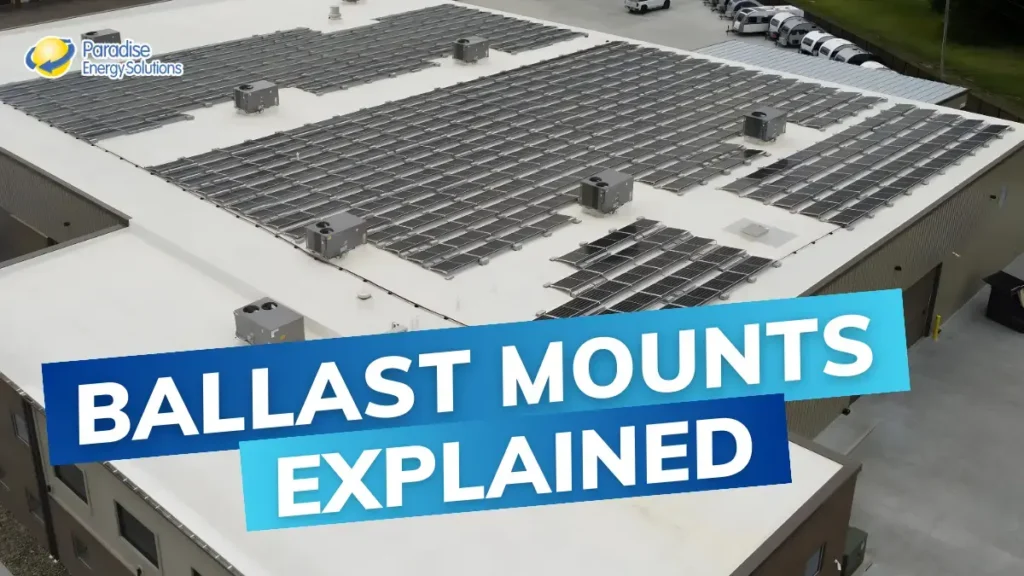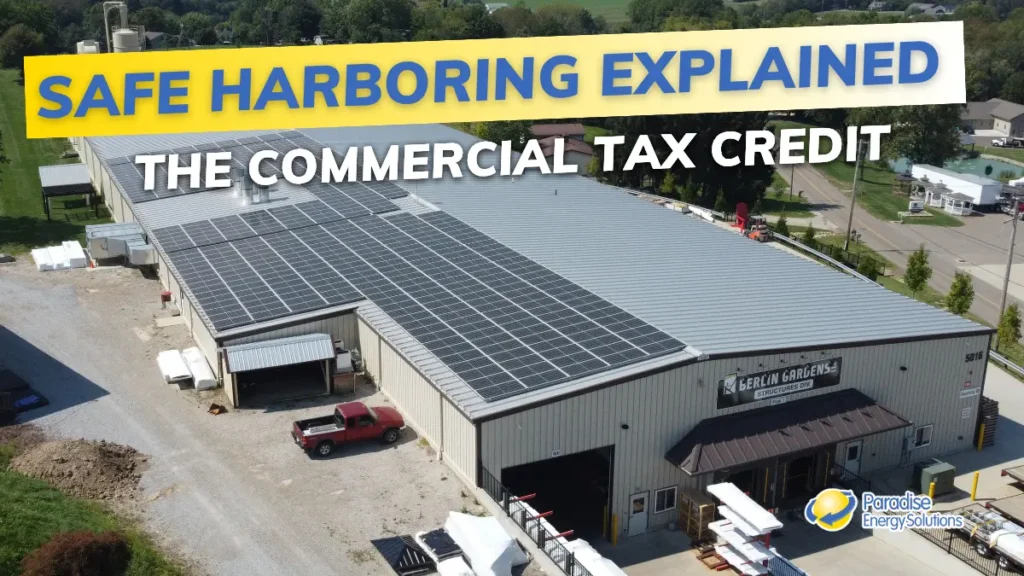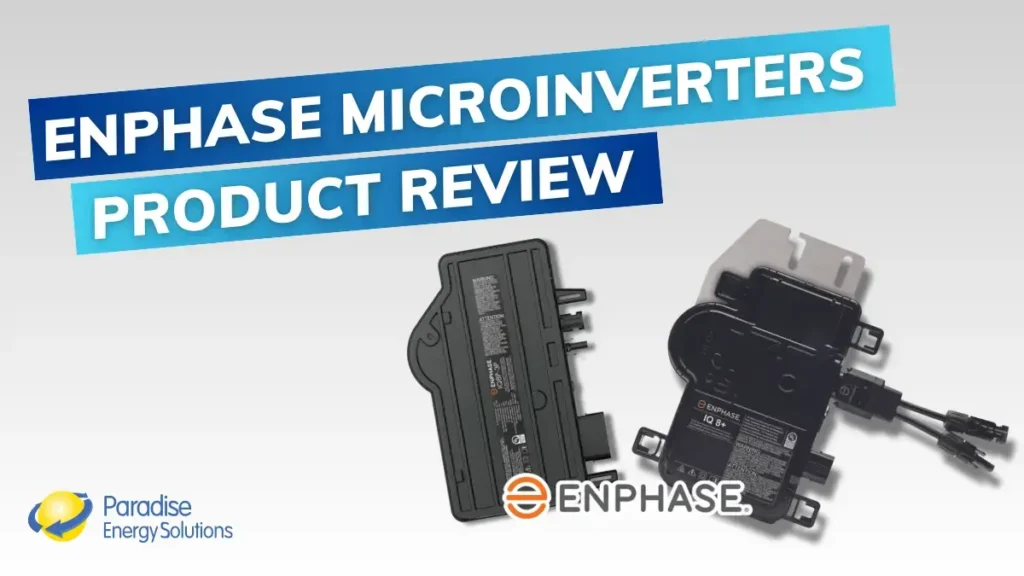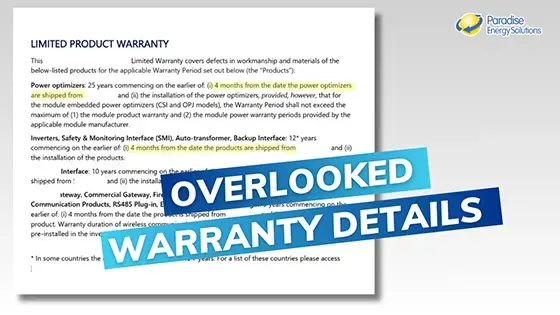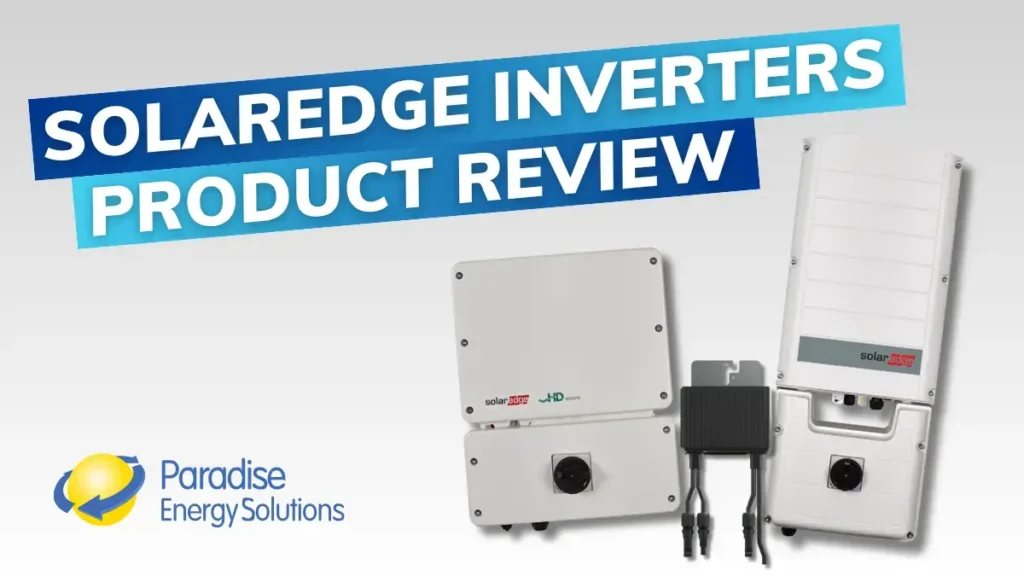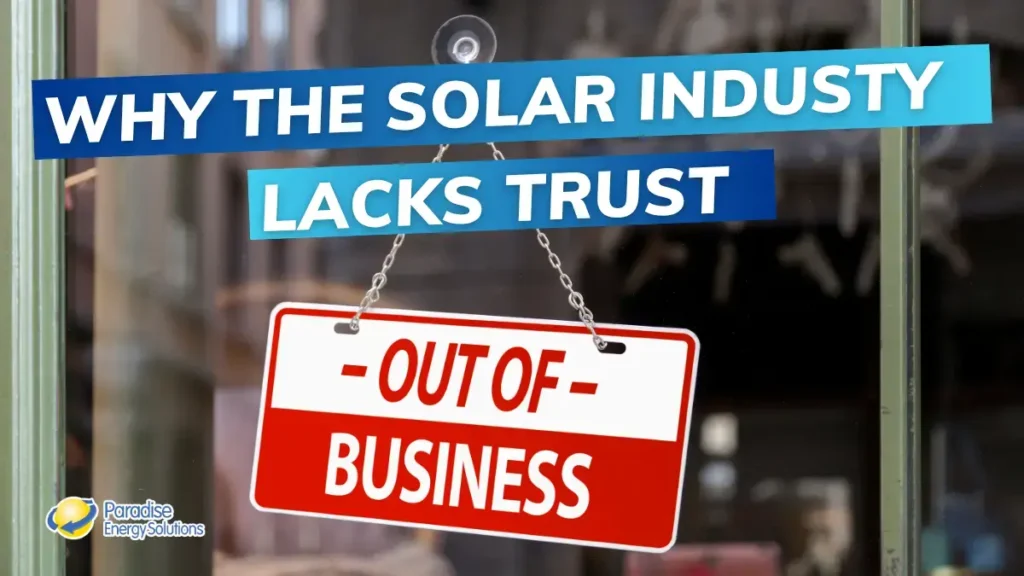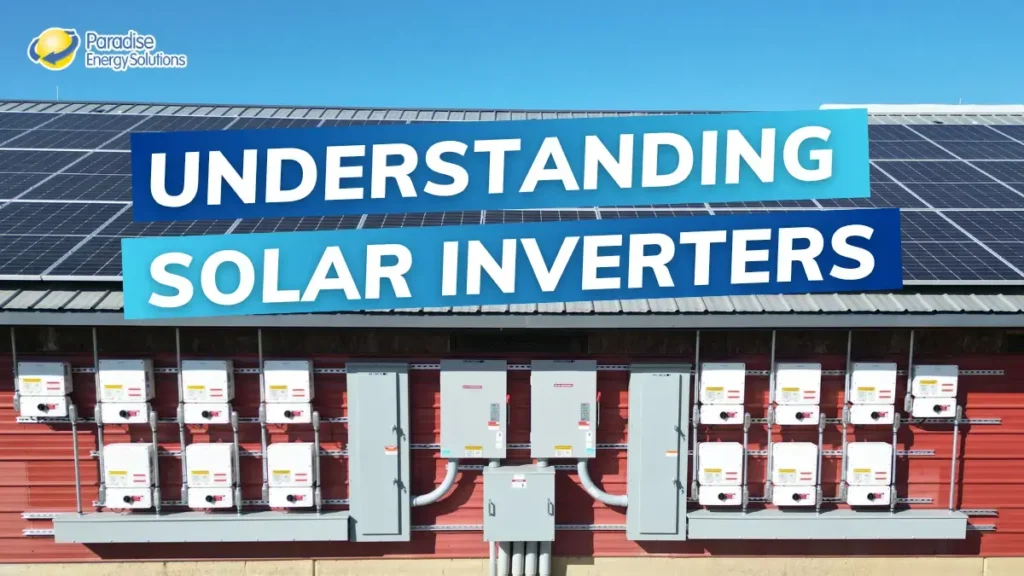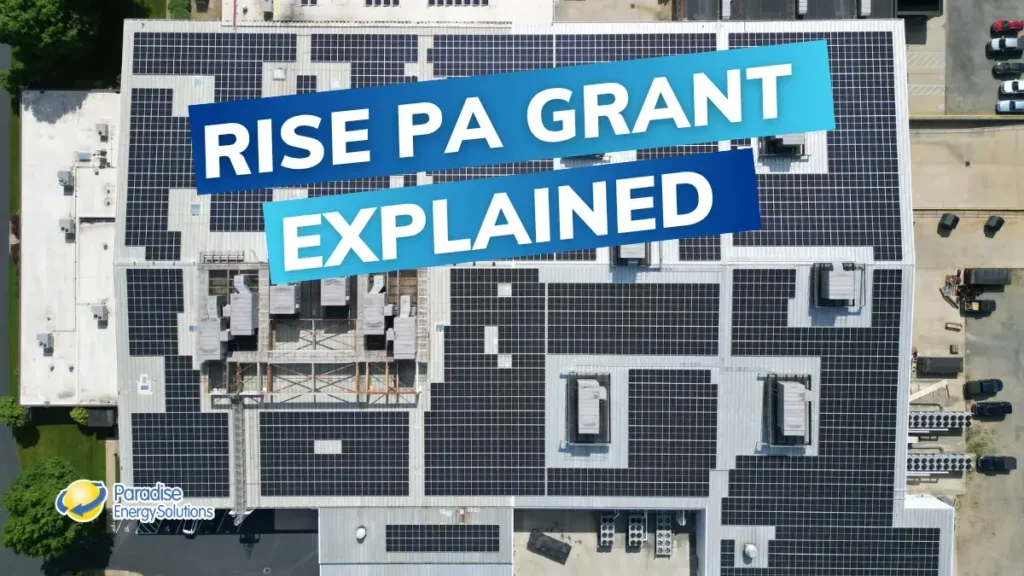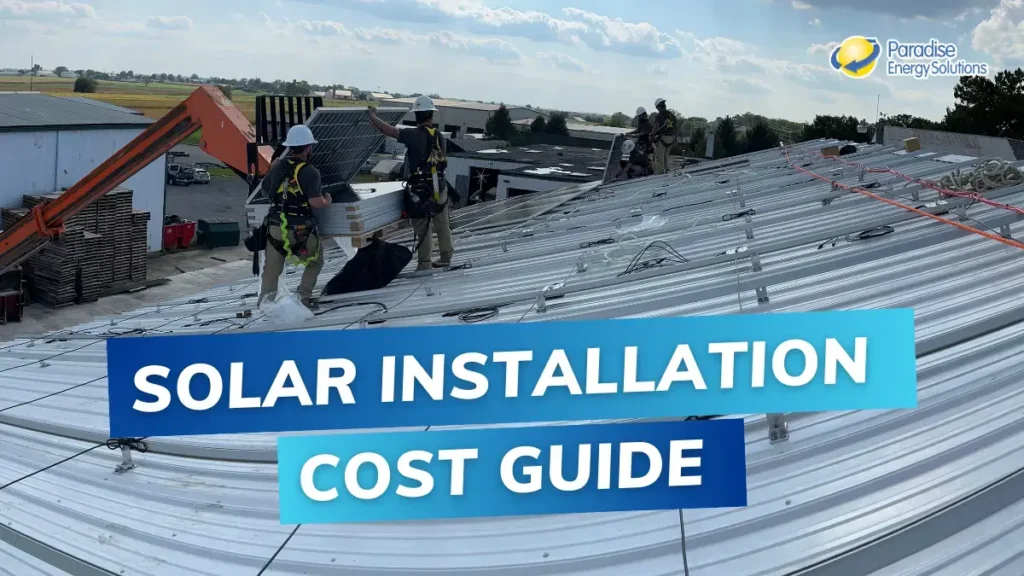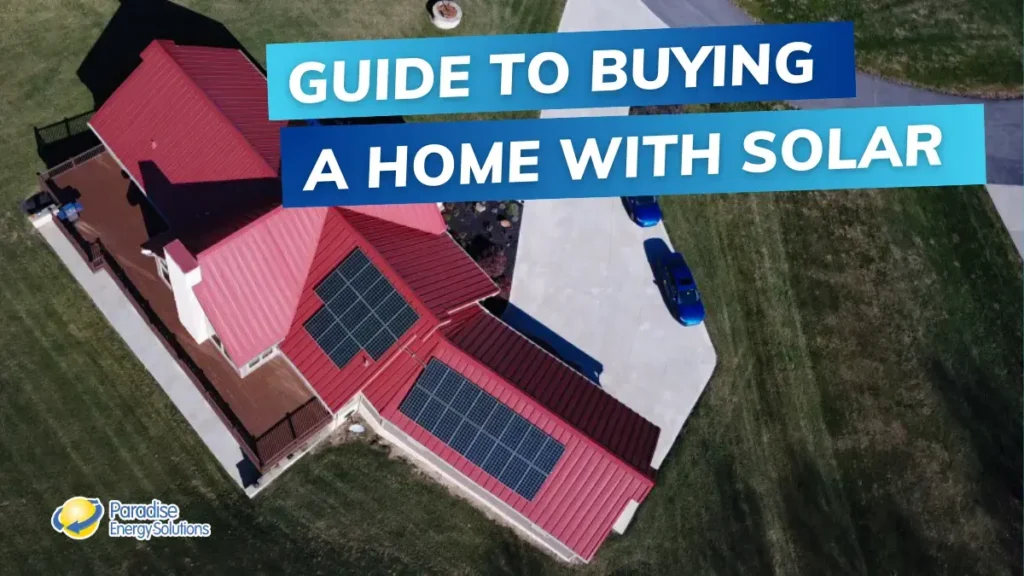Most of the solar panel systems we see in our community are installed on pitched roofs or as ground mounts, but what about flat roofs? Unless you have a bird’ s-eye view of the building, you can’t tell what’s up on the roof.
This may make you wonder whether or not you can have solar panels on a flat roof. The answer to that is yes, and the way many commercial solar panel systems are installed on a flat roof is by something known as a ballast mount.
How are Ballast Mounted Solar Systems Installed?
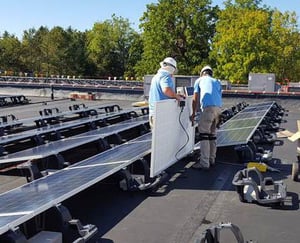 Whereas most other roof mounts are secured to the building’s roof rafters through penetrations in the roof, ballast mounts are secured with weight.
Whereas most other roof mounts are secured to the building’s roof rafters through penetrations in the roof, ballast mounts are secured with weight.
The solar panels are attached to a solar racking system. That racking system has trays below the panels on which heavy concrete blocks will be placed. The weight of these blocks keeps the solar panels in place on flat roofs.
While the system will sit on a flat roof, the solar panels themselves will be installed at an angle in most cases. Installing solar panels at an angle can increase the amount of sunlight they receive, which allows them to produce more electricity. Additionally, a slight angle can also make it easier for snow and rain to slide off instead of accumulating on the face of the panel.
That said, installing solar panels at a tilt also means they’ll cast a shadow. If that shadow falls on other solar panels in your system, it can inhibit production.
Your Roof Space Will Determine the Size of Your Ballast Mount
Essentially, the exact layout and design of your ballast mount will depend on the ratio of available roof space to the amount of electricity you’d like your system to produce.
If your roof space is relatively small compared to the amount of electricity you need, you’ll want to design a system with high power density by installing as many solar panels as possible on your roof.
This often means installing your panels at a lower angle relative to the roof (about ten degrees or less). By doing so, you can install the rows of panels more closely without having the row in front cast a shadow on the row behind it.
If you have a good deal of open roof space relative to the amount of electricity you’d like your solar panels to produce, you can increase the angles of your panels. Increasing the angles will create longer shadows, meaning the rows of solar panels will have to be placed further apart. However, depending on where in the world you live, higher tilt angles can increase the amount of energy your panels produce.
In an ideal scenario, your solar panels should be installed at an angle about equal to your location’s latitude. That means if you live along the 30-degree latitude line, you’d want to install your panels at a 30-degree angle. If you live at the equator, you’d want them to be flat. However, installing your solar panels at the perfect pitch isn’t essential to having a solar system that performs well.
Is Your Roof Right for Ballast-Mounted Solar?
Solar panel ballast mounts can be a great option for homes and businesses with flat roofs. They can even have some advantages over solar panels installed on a sloped roof. However, ballast-mounted solar won’t be ideal for all buildings.
Here are a few things to consider.
Small Roofs May Require Penetrations
The solar panels in a ballasted solar roof mount are secured to a racking system which is then held in place on the roof by weights. For most roofs, this means no penetrations are required to install the system.
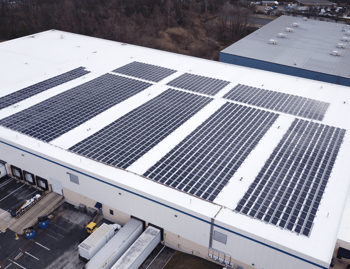 Because most people are wary of putting holes in their roofs, this is a popular selling point for ballast mount systems. However, depending on the size of your roof, penetrations may still be required. Small flat roofs may need additional roofing attachments that have to be secured through the roof. These attachments will be installed by a third-party roofing company and may or may not impact your roof’s warranty.
Because most people are wary of putting holes in their roofs, this is a popular selling point for ballast mount systems. However, depending on the size of your roof, penetrations may still be required. Small flat roofs may need additional roofing attachments that have to be secured through the roof. These attachments will be installed by a third-party roofing company and may or may not impact your roof’s warranty.
But because most flat roofs, in general, top mid-to-large-sized commercial buildings, the vast majority are installed without these additional attachments and with no roof penetrations needed.
That said, it’s worth noting that a properly installed roof-mounted system should not leak or cause any issues, regardless of how it’s mounted or the roofing material. Thanks to specially designed attachments and properly installed flashing, no water damage will occur if the system is installed properly and with trusted, quality materials.
Roof Needs to Support the Additional Weight
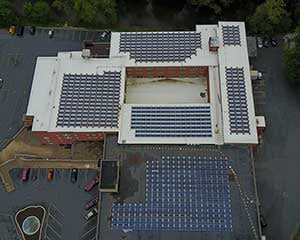 Ballast mount systems are held in place by weight, so your roof and your building need to be able to support this added burden.
Ballast mount systems are held in place by weight, so your roof and your building need to be able to support this added burden.
The average 60-cell solar panel will weigh about 40 pounds, which isn’t a problem for most commercial roofs that are in good shape.
Regardless of the type of roof-mounted system you install, a third-party structural engineer must sign off on the drawings before installation can begin.
Strong Winds Require Even More Weight
Ballast mount systems are designed to stand strong against strong winds. However, the stronger the winds in your area, the more weight will be needed to keep your solar system in place.
This may include buildings that are several stories above ground level where winds can be strong. Or buildings located on or near the coast. If this sounds like your building, your ballast mount may need even more weight to keep those panels secure. That means a strong roof with solid supports.
The Condition of the Roof Matters
Just like any other roof-mounted solar system, you want to make sure your roof is in good condition. Panels should only be installed on a roof that is in the early stages of its life and in a condition that will be suitable for holding panels for several decades.
We typically discourage people from installing solar panels on a roof that has a shorter remaining lifespan than the payback period of the solar panels. For example, if you have a 10-year payback on the solar system don’t install the panels on a roof that only has 7 years of a useful life remaining. The cost to remove and reinstall your panels is a cost that you’ll want to avoid if possible.
How Flat is Your Flat Roof?
Most flat roofs aren’t 100% flat, and that’s intentional. They can have a small pitch of under ten degrees which helps with water drainage.
If your roof is pitched at three degrees or lower, a ballast mount should work well on your building. However, if it’s much steeper than this, additional weights will be needed to keep your system secure, which could potentially exceed your roof’s weighted capacity.
Should You Install Ballast Mounted Solar Panels?
Putting solar panels on your roof is a great way to save money in the short term and long term by creating renewable energy. If you have a business or a home with a flat roof, a ballast system may be the option for you.
By holding the panels in place with weight, there’s no need for roof penetrations that can inhibit your roof’s warranty. However, smaller flat roofs may not be able to depend on weight alone to hold the panels down, and some penetrations may be needed.
Additionally, your roof will need to be able to support the weight of the solar system. If your building is located in an area with strong winds or you have a higher-pitched flat roof, even more weight will need to be added, putting more stress on your roof.
That said, ballast mounts are popular among flat-roof owners for a reason. They’re relatively easy and fast to install, and in most cases, they keep your roof in great shape and your roof’s warranty in good standing. On top of that, you get free, renewable electricity.
Paradise Energy Solutions has installed hundreds of ballast-mounted systems. Below are links to view a few of them:
